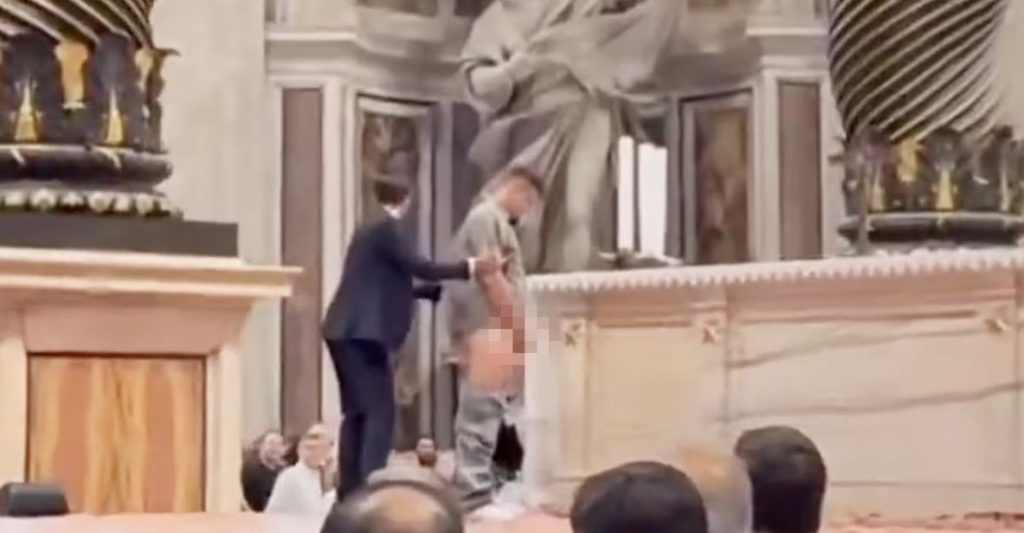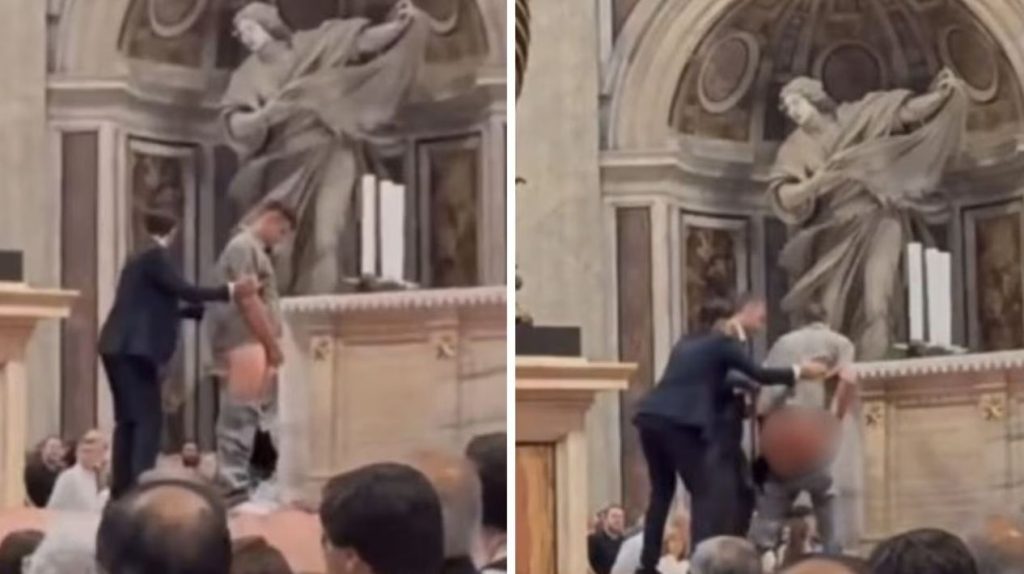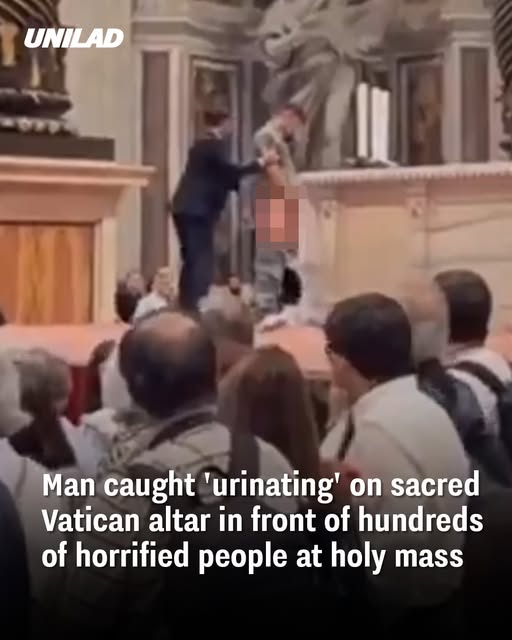During a routine morning Holy Mass at St. Peter’s Basilica, an incident unfolded that left many in disbelief. A man walked up to the Altar of Confession one of the holiest spots in Vatican City and urinated upon it in full view of worshippers and tourists. The act of desecration quickly drew attention, and security moved in to remove him. The footage captured has since circulated widely, sparking outrage and concern.
What Happened at the Altar
At about 9:00 a.m., the Mass was underway when the man, whose identity remains unknown, made his way past barriers and onto the steps leading to the sacred altar. Without apparent warning, he lowered his trousers and relieved himself on the altar space, a site traditionally reserved for papal liturgical ceremonies. Eyewitnesses and video recordings show the moment he pulled his pants back up as security intervened. Plainclothes officers present in the basilica restrained him and escorted him out. Some observers report that he exposed himself briefly while being led away. The suddenness and boldness of the act stunned those present.

Reactions and Responses
Pope Leo XIV was reportedly informed of the incident and described as “shocked” by the desecration. While there has not been an official public statement from the Vatican’s press office, local reports suggest that Vatican officials treated the event as one involving a person with serious mental health issues. The individual was taken into custody by Vatican police and placed in the hands of Italian authorities. The act has reignited debate over security and protocols at the basilica. Many visitors and religious devotees expressed deep dismay, calling the behavior disrespectful and sacrilegious. Some argued that the openness of the site, which welcomes millions annually, leaves it vulnerable to such disruptions.
Pattern of Incidents at St. Peter’s
This is not the first time the basilica’s altar has been targeted. Earlier in the same year, another person climbed onto the altar and knocked over several ornate candelabras, causing damage in the sacred area. In 2023, a different protester appeared nude atop the altar, inscribed with “Save children of Ukraine” on his back, prompting a swift security response and ritual cleansing of the altar afterwards. In each case, Vatican officials have conducted penitential rites to restore the altar’s sanctity, as required by liturgical tradition. The recurrence of these incidents has fueled calls for rethinking access controls and preventive measures in such a revered location.
Legal and Spiritual Implications
Under Italian law, acts of indecent exposure and desecration of religious sites may carry legal consequences. However, reports so far do not confirm whether formal charges have been filed in this case. The fact that Vatican authorities moved quickly to detain the individual suggests seriousness in the response. From a spiritual perspective, the act is widely seen as a grave offense. The Altar of Confession sits above the tomb of Saint Peter and remains one of the most revered liturgical sites in Christendom. The symbolic weight of desecrating such a place has left many religious observers deeply unsettled.

Looking Forward: Security vs. Openness
This episode raises tough questions about balancing the basilica’s role as a place of worship and pilgrimage with the need for security and respect. Should greater restrictions on access be imposed? Can surveillance and staff training be enhanced to prevent repeat incidents? How can mental health issues be better anticipated and managed in places open to the public?
Conclusion
For now, the altar is likely to remain under tighter guard, and Vatican officials may review protocols concerning visitor conduct, screening, and response. Meanwhile, the faithful mourn the violation of a sacred space even as they hope for lessons learned from this troubling event.

















